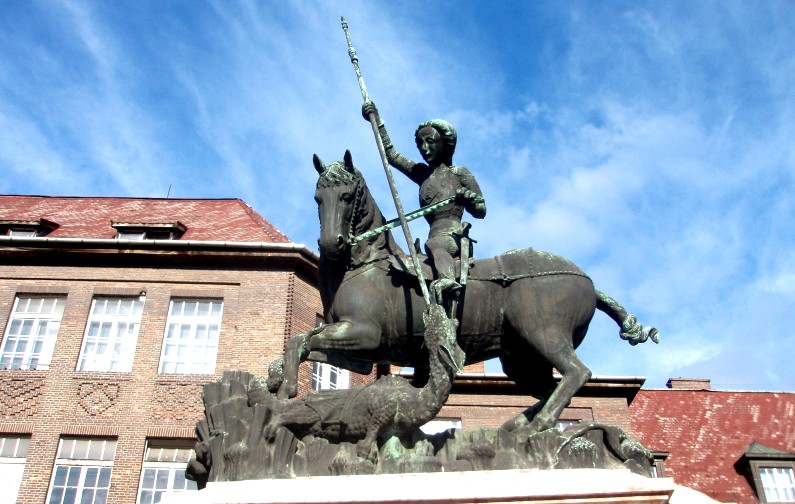According to folk tradition, the beginning of the real spring starts from this day. Géza Róheim examined the customs and beliefs of St. George's Day in their historical and interethnic context. According to his research, there is a watershed in the folklore of Eastern and Western Europe as to whether the spring new year customs are connected to St. George's Day or May Day.
In the eastern part of Germany, in the Slavic-speaking area and in Hungary, this border day is St. George's Day. In ancient Rome, Palilia was celebrated, which was a shepherd's holiday. The continuation of this tradition can also be seen in domestic animal husbandry customs. Many beliefs and customs were attached to the first turning out of the animals on St. George's Day, with which they tried to ensure the health, fertility, and milk yield of the animals. Cattle on a chain, axe, ploughshare, egg, the housewife's apron, etc. with the purpose of warding off evil and conjuring fertility. was driven over. Great importance was also attached to the cane, the green branch with which the animals were first driven out to the pasture.
St. George's Day was considered by Hungarian folklore to be a suitable time for mischief and sorcery. A typical manifestation of this belief is the gathering of dew - with various magical purposes. Dew was collected for the benefit of milk. On Zagyvarékas, they pulled their linen aprons or their aprons in the dew while saying: "I'll take it all..." or "I'll bring butter, not milk, I'll bring butter, not milk." Meanwhile, they also picked a handful of grass. This was placed in front of the cow. And the dewy cloth was squeezed into the milk pot so that there would be a lot of butter.
According to the description from the Ormánság: "Whoever has a poor crop should go out to the field at midnight on St. George's Day with a sheet and wherever he finds a good crop, pull the sheet along behind him over his own crop to get the dew on it, then it will be beautiful his grain". The dew collected with a sheet at the dawn of this day was dripped into the bread dough to make the bread more beautiful. In addition to this widely known belief, there is a description from the county of Borsod from the beginning of the century, according to which cakes were made with the dew, which were dried and salted and given to the cows so that they would milk well.
On St. George's night, they were especially afraid of being corrupted by witches. In the Ormánság, it was believed that whoever had the half-timber of the gate carved by the witches on this night, that person's milk profit was taken away. It is a well-known belief that witches can milk milk from various objects (e.g. a well, a sheet, an apron). They defended themselves against the harm of witches with green branches, smoking, garlic, and washing milkweeds with medicinal herbs (e.g. Lord's day herbs).
Folk belief considered St. George's Day suitable for searching for treasure hidden in the ground, which was believed to be set on fire every seventh year on St. George's Day.
Weather forecasting beliefs are also associated with the period around St. George's Day. For example, the Hungarians of Bukovina and the inhabitants of the villages along the Ipoly believe that if the frogs call before this day, it predicts early spring and summer. The frog calling before St. George's Day indicates a rainless summer in the villages of Medvesalj. The frog was also used for healing in this region. Warts were cured with a dried frog and reading on it.
Customs and beliefs related to St. George's Day are primarily related to the beginning of spring. Saint George the Dragon Slayer was the patron saint of knights, horsemen, and later scouts, as well as of gunsmiths and harness guilds due to his equipment.
Source: Arcanum
(Header image: Wikimedia)












